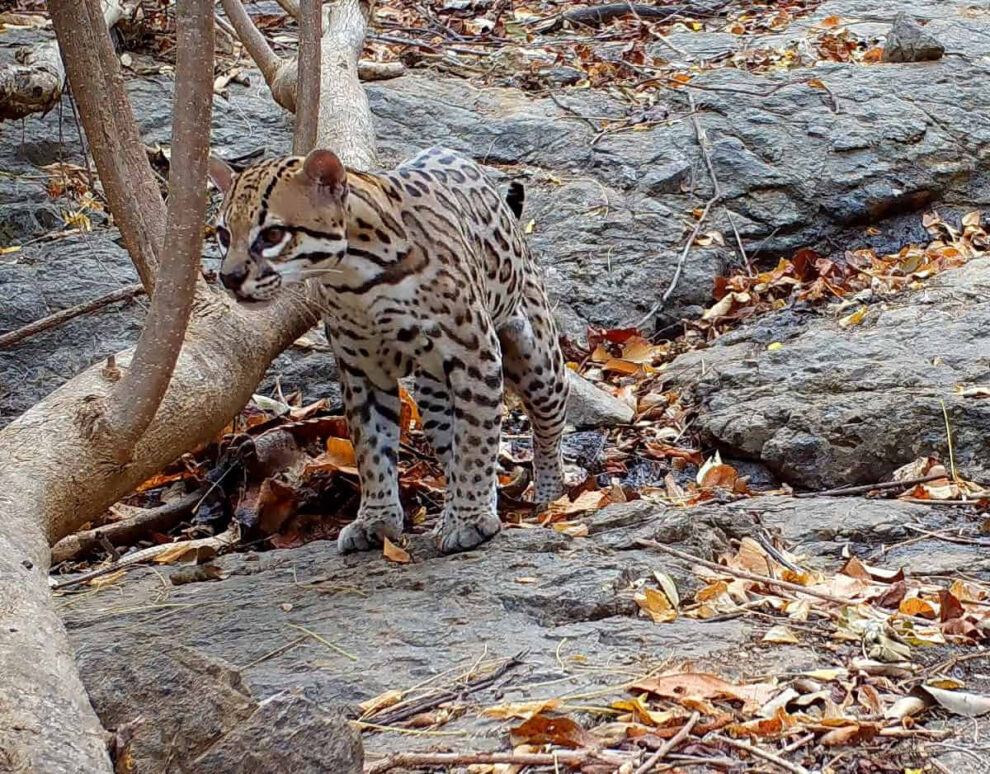What do you do with a gluttonous meal that’s just too big to finish? You stick it in the fridge, wait until you’re hungry again, and come back for seconds. Well, it turns out that that’s not a purely human thing to do because I discovered an ocelot refrigerator.
Ocelots feed on a wide variety of prey. The literature has an exhaustive list of prey items that ranges from large animals like collared peccaries and brocket deer down to smaller food items like rats, lizards, land crabs and frogs. They’ll even mix in some fruit and grass for good measure. I’ve personally recorded ocelots carrying around common opossums, rats, iguanas, anteaters, and even rattlesnakes. I’ve also recorded them pursuing white-tailed deer, though I’m not sure how successful they are in the end with such large prey.
The smaller prey items can surely be gobbled down in one sitting, but what does the ocelot do with a meal that’s just a little too big? Well, I found out by placing a camera trap on the last remaining trickle of water on a property along the beach in Guanacaste. These spots are usually prime locations for wildlife activity. As dry season persists, there are fewer and fewer places for wildlife to quench their thirst.
Early in the morning in mid-February 2020, a male ocelot stopped by for a drink but before he started lapping up water, he drug a half-eaten armadillo into the frame of the camera. After sufficiently rehydrating, he took several minutes to cover his leftovers with wet leaves. Once he was content with this work, he moved on.
He returned just after nightfall that same day, exhumed his meal and drug it off once again to finish in privacy. Just to put a cherry on top of this awesome series of videos, he returned a half-hour later to take a post-dinner nap, directly in front of the camera, on the cool wet rocks.
I had previously heard of larger predators, like pumas, covering their prey with debris to hide it from scavengers, allowing them to return later to continue eating. However, I didn’t know that ocelots did the same thing. After some research, I found a study in Panama published in 2006 that documented ocelots covering half-eaten agoutis in leaves and returning to eat them later.
I do wonder if what I documented was a new twist on a known activity. The ocelot had an entire forest, filled with leaves, to hide the armadillo but it chose to use the last cool, wet leaves in the area. Can it be an accident that he covered his food in a substance that would allow it to be as fresh as possible hours later when he returned to eat it? I don’t think so. I think he chose to make an ocelot refrigerator.
Source : Ticotimes
















